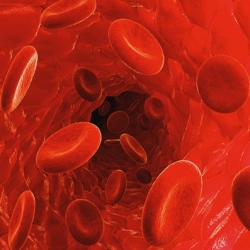
A team of engineers from is developing a novel way to isolate cancer cells that circulate in the bloodstream: using sound waves to separate them from blood cells. Cancer cells often break free from their original locations and circulate through the bloodstream, allowing them to form new tumors elsewhere in the body.
Detecting these cells could give doctors a new way to predict whether patients’ tumors will metastasize, or monitor how they are responding to treatment, but finding these extremely rare cells has proven challenging because there might be only one to 10 such cells in a 1-milliliter sample of a patient’s blood.
Their new cell-sorting device is 20 times faster than the original version that they first reported last year, approaching the speed that would be necessary to make it useful for testing patient blood samples. The researchers have also demonstrated that the device can successfully capture circulating tumor cells from patient samples, which could enable many clinical applications as well as fundamental research on how these cells escape from their original tumor site.
Ming Dao, a principal research scientist in MIT’s Department of Materials Science and Engineering; Subra Suresh, president of Carnegie Mellon and, at MIT, the Vannevar Bush Professor Emeritus of Engineering and a former dean of engineering; and Tony Jun Huang, a professor of engineering science and mechanics at Penn State, are senior authors of a paper describing the device in the Proceedings of the National Academy of Sciences the week of April 6.
